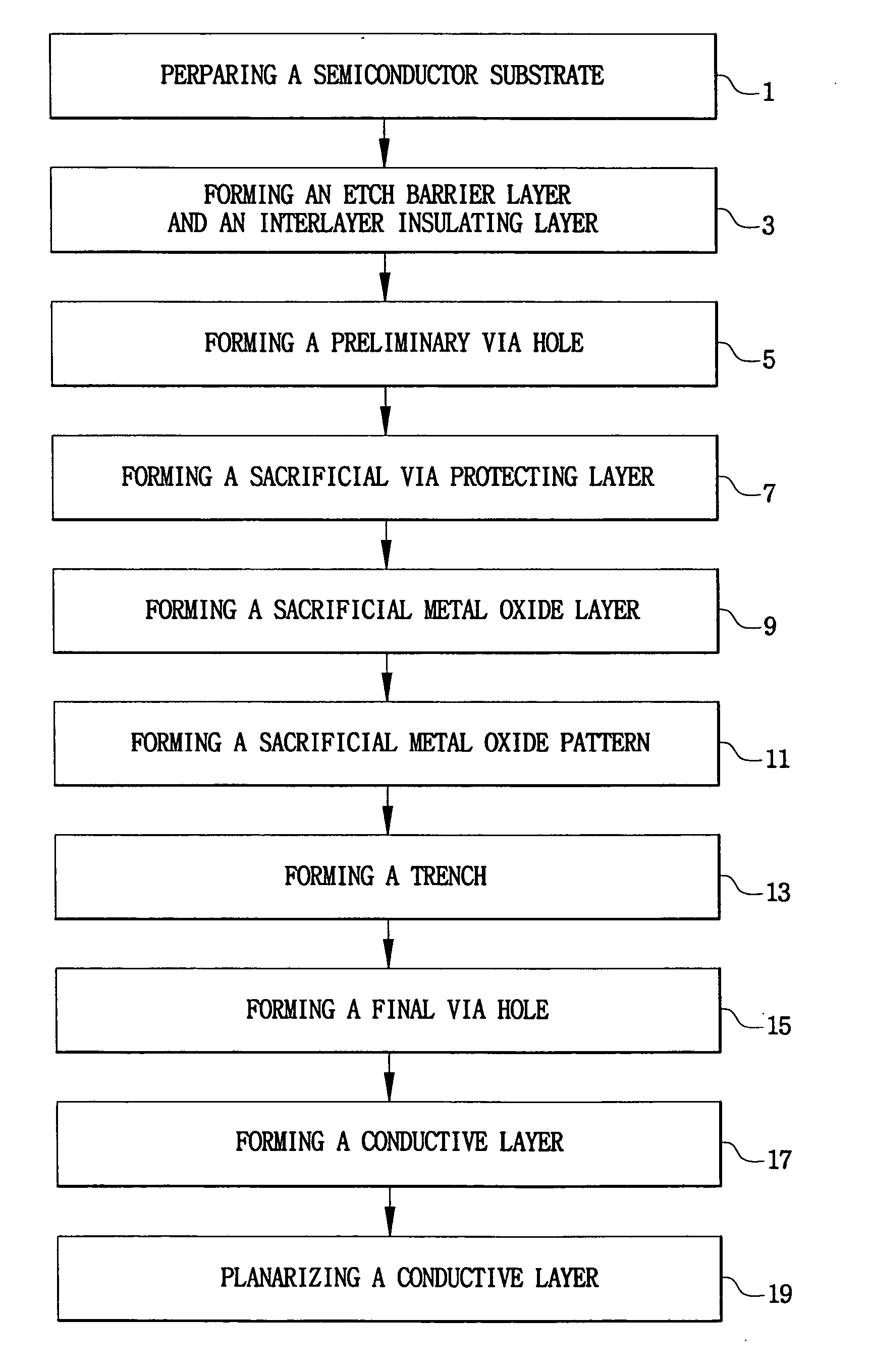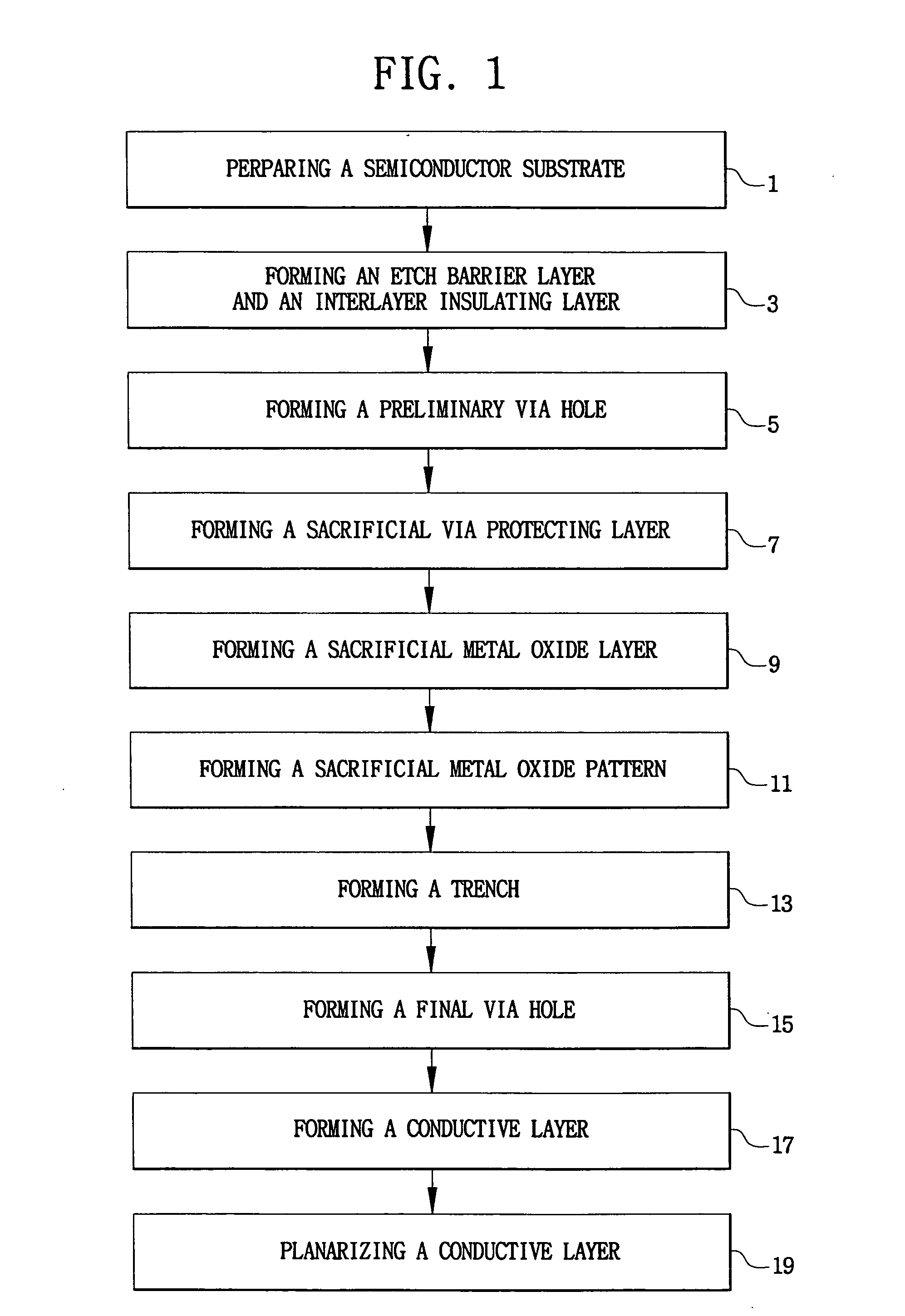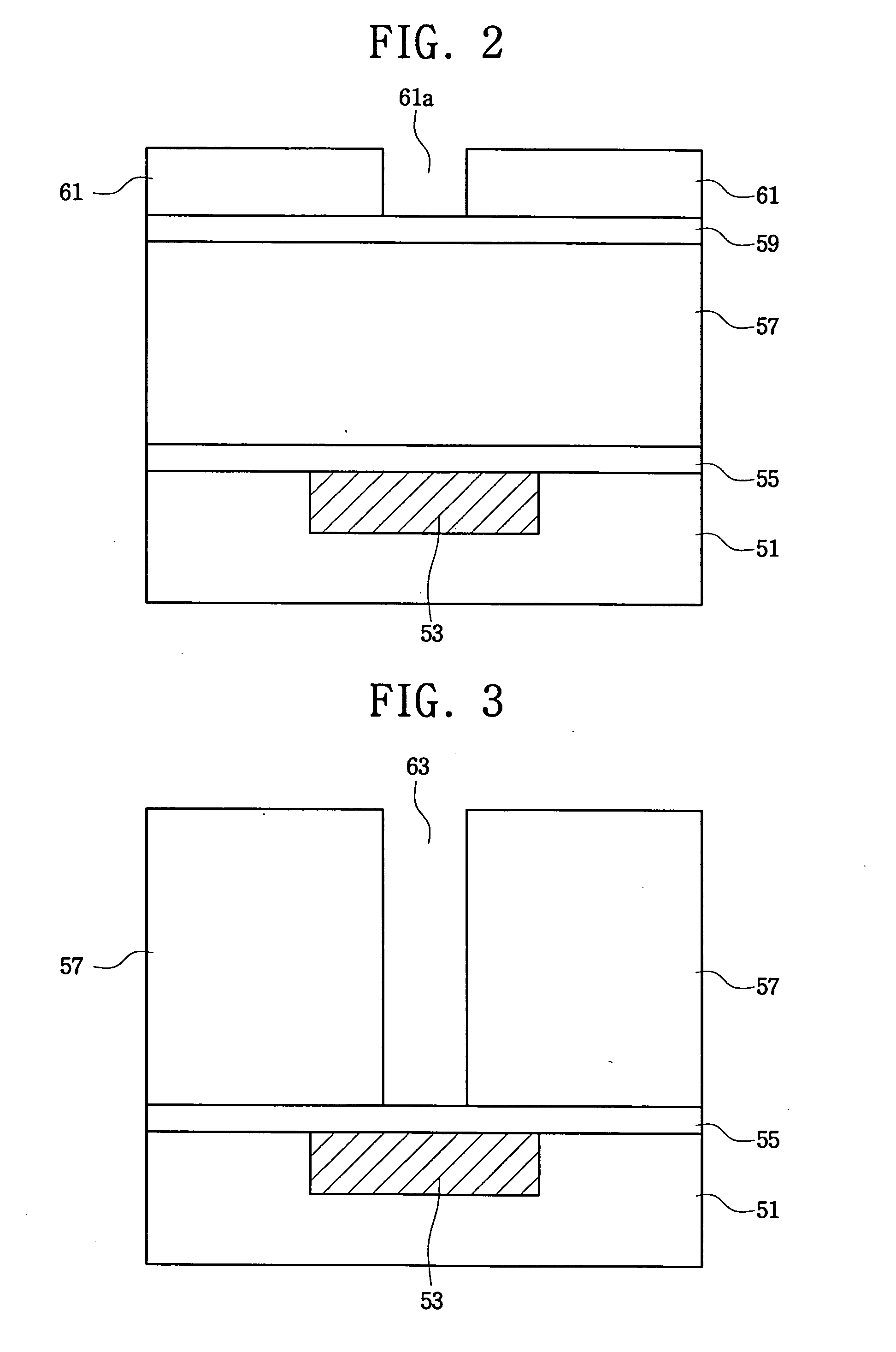Method of forming dual damascene metal interconnection employing sacrificial metal oxide layer
a metal interconnection and sacrificial metal technology, applied in the field of semiconductor devices, can solve the problems of etch damage, lack of process margins of vfdd photolithography process, and difficulty in forming photoresist patterns having an appropriate pitch just with exposure steps using krf lasers, etc., to achieve the effect of improving process margins
- Summary
- Abstract
- Description
- Claims
- Application Information
AI Technical Summary
Benefits of technology
Problems solved by technology
Method used
Image
Examples
Embodiment Construction
[0030] The present invention will now be described more fully hereinafter with reference to the accompanying drawings, in which preferred embodiments of the invention are shown. In the drawings, the thickness of layers and regions are exaggerated for clarity.
[0031]FIG. 1 is a sequential flow chart illustrating a method of forming a dual damascene metal interconnection according to an embodiment of the present invention, and FIGS. 2 to 11 are sectional views illustrating a method of forming a dual damascene metal interconnection according to the sequential flow chart of FIG. 1.
[0032] Referring to FIGS. 1 and 2, there is prepared a semiconductor substrate 51 having a lower interconnection 53 (step 1 of FIG. 1). The lower interconnection 53 may be formed using a damascene process. Further, the lower interconnection 53 may be a copper interconnection, and a diffusion barrier layer (not shown) may be formed on the side walls and the bottom of the copper interconnection 53.
[0033] Furth...
PUM
| Property | Measurement | Unit |
|---|---|---|
| transparent | aaaaa | aaaaa |
| visible wavelength | aaaaa | aaaaa |
| thickness | aaaaa | aaaaa |
Abstract
Description
Claims
Application Information
 Login to View More
Login to View More - R&D
- Intellectual Property
- Life Sciences
- Materials
- Tech Scout
- Unparalleled Data Quality
- Higher Quality Content
- 60% Fewer Hallucinations
Browse by: Latest US Patents, China's latest patents, Technical Efficacy Thesaurus, Application Domain, Technology Topic, Popular Technical Reports.
© 2025 PatSnap. All rights reserved.Legal|Privacy policy|Modern Slavery Act Transparency Statement|Sitemap|About US| Contact US: help@patsnap.com



